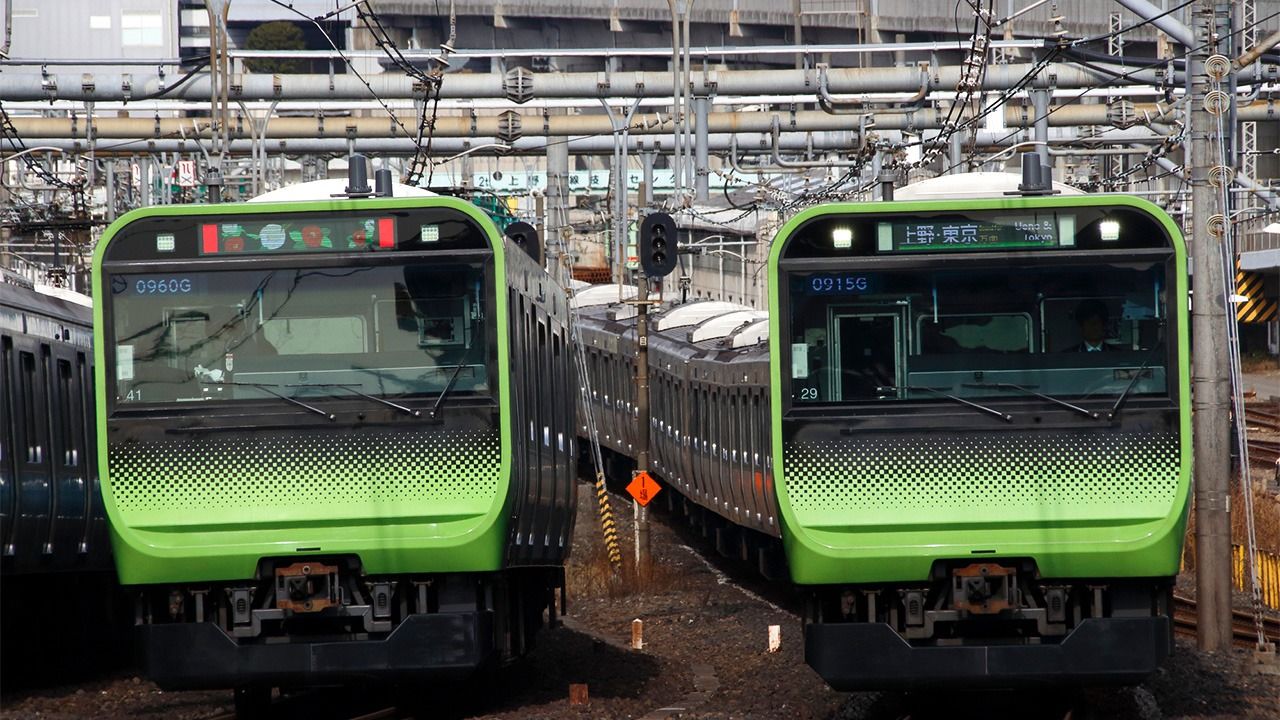
A Walk around the Yamanote Line
The Yamanote Line: Crown Jewel of Tokyo’s Transportation System
Guide to Japan Travel- English
- 日本語
- 简体字
- 繁體字
- Français
- Español
- العربية
- Русский
Circuit Around the Heart of the City
Tokyo has dozens of railway lines and an extensive subway network, but the JR Yamanote Line is arguably the most prominent of them all. A loop line encircling the heart of Tokyo and connecting most of the city’s major stations and subcenters, including Shibuya, Shinjuku, Ikebukuro, Ueno, and Tokyo, the Yamanote has become essential to the life of Tokyoites.
The current line is 34.5 kilometers long, with trains riding clockwise on the outer rail and counter-clockwise on the inner one. However, it took 40 years for the Yamanote to become a circle loop as we know it today.
The predecessor of the Yamanote, the Shinagawa Line, opened in 1885 between Shinagawa and Akabane stations. At that time, Japan was promoting the export of raw silk, silk fabrics, and other goods, and trains were the quickest way to transport products from Gunma Prefecture, where sericulture and silk-reeling industries were thriving, to the trading port of Yokohama in Kanagawa Prefecture.
In 1872, Japan’s first railway line opened between Yokohama and Tokyo’s Shinbashi Station. Then, in 1883, the Takasaki Line solved the problem of getting the silk from Takasaki, Gunma to Ueno, Tokyo. However, those two lines were not directly connected. So, two years later, the Shinagawa Line was developed by Nippon Railway as the missing link between the two. In other words, the Yamanote was first used as a freight line, not a commuter train.
More sections were added in the following 40 years (in the process, the line’s name changed to Yamanote in 1909) until the loop was finally completed in 1925 with the construction of the stretch between Ueno and Kanda. The year 2025 will be the hundredth anniversary for the completed Yamanote line.
Technically speaking, the “real” Yamanote Line is limited to the 20.6-kilometer western portion between Tabata and Shinagawa. Even today, if you visit Shinagawa Station, you can still find the “0 kilometer post“ originally installed to mark the starting point of the line. That also explains its name: Yamanote (literally the “mountain or hilly side”) refers to the slightly elevated area where the city’s western districts, such as Shibuya, Shinjuku, and Ikebukuro, are located.
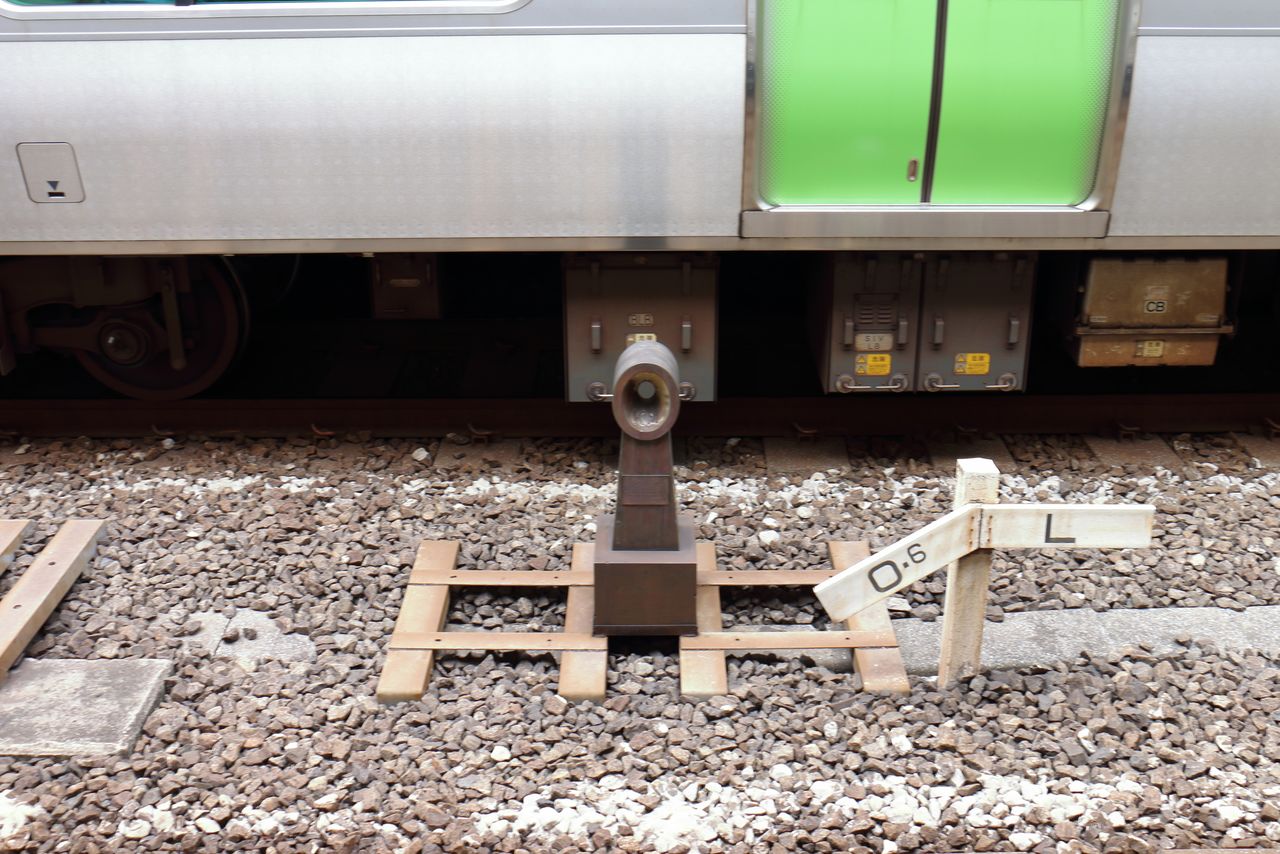
Today the Yamanote’s 0-kilometer point is at Tokyo Station, between platforms 4 and 5, where the marker has stood since the station celebrated its fifty-fifth birthday in 1969. (© Pixta)
Only railway insiders and trainspotters know that the section between Tabata and Tokyo actually belongs to the Tōhoku Main Line, and the one between Tokyo and Shinagawa to the Tōkaidō Line. Of course, you don’t need to know this bit of trivia to enjoy the ride. For all practical purposes, you can go round and round in either direction without changing trains for as long as you want—at least between the first train at 04:26 a.m. and 01:04 a.m. (as of October 2024) the next day, when the line shuts down for nightly maintenance.
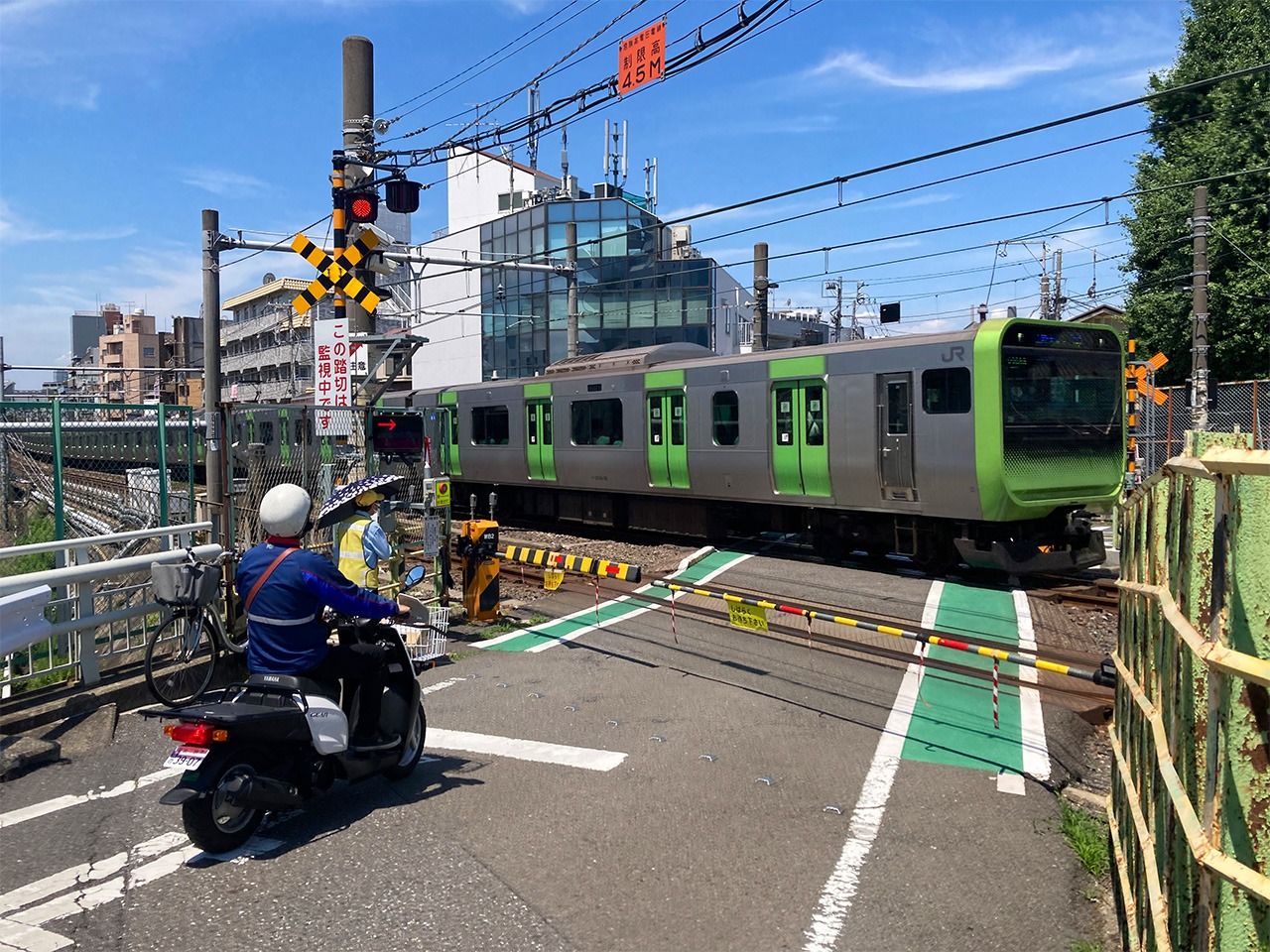
The only surviving railroad crossing on the Yamanote can be found between Tabata and Komagome Stations. (© Gianni Simone)
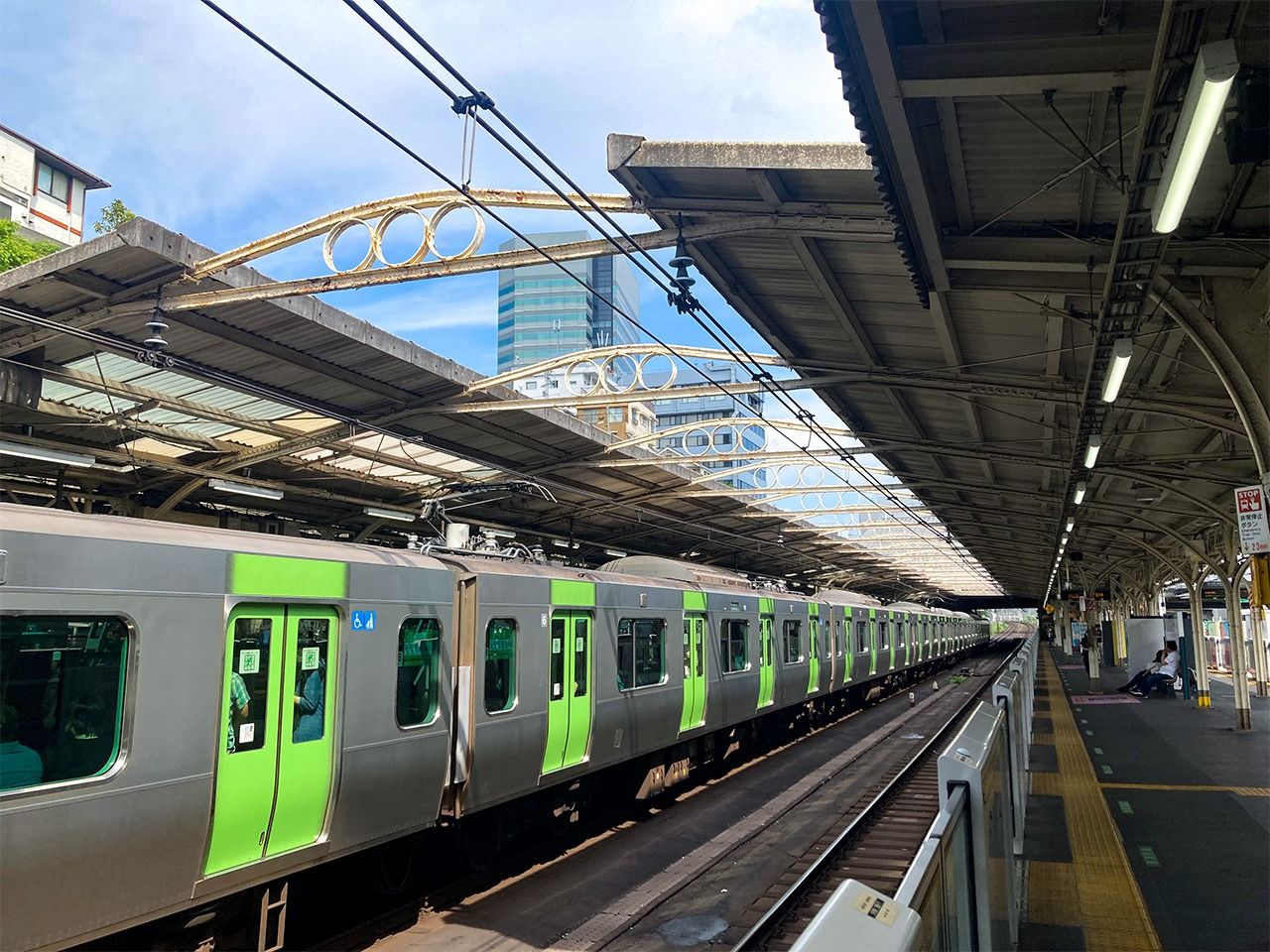
The pillars sustaining the roofs and arches connecting them at Tabata Station are actually disused, recycled rails. (© Gianni Simone)
Tokyo has a reputation for being a chaotic metropolis due to its haphazard look and the lack of coordinated urban planning. However, this is a cursory evaluation based on Western stereotypes about what a city ought to look like. Its order is clearly not visual but of another sort.
In fact, Tokyo is an extremely complex metropolitan system that functions like a clockwork machine. Indeed, it is among the safest and most reliable places in the world. Its orderliness is best represented by its railway system, and the Yamanote stands at its center.
Looking Back at the Yamanote’s Growth
Throughout its history, this line has grown in step with the city, and as Tokyo is often compared to a living, ever-changing organism, the Yamanote can be considered its pulsating heart—a heart that has progressively developed in order to serve Greater Tokyo, a vast metropolitan region that is home to more than 30 million people. Night and day, following the city’s contractions, the Yamanote muscle keeps driving the blood on its circuit.
A great number of train and subway lines crisscross Tokyo, yet the Yamanote remains the most iconic. It not only encircles the historical core of the city, but it also serves as a springboard for the many private railways run by operators including Tōkyū, Odakyū, Keiō, and Tōbu working their way out from the loop to the vast suburbs surrounding the capital. You can think of it as a spinning wheel or a moving distribution center, where people are sorted out and sent in all directions of the compass along its spokes to meet their destiny and fulfill their duties.
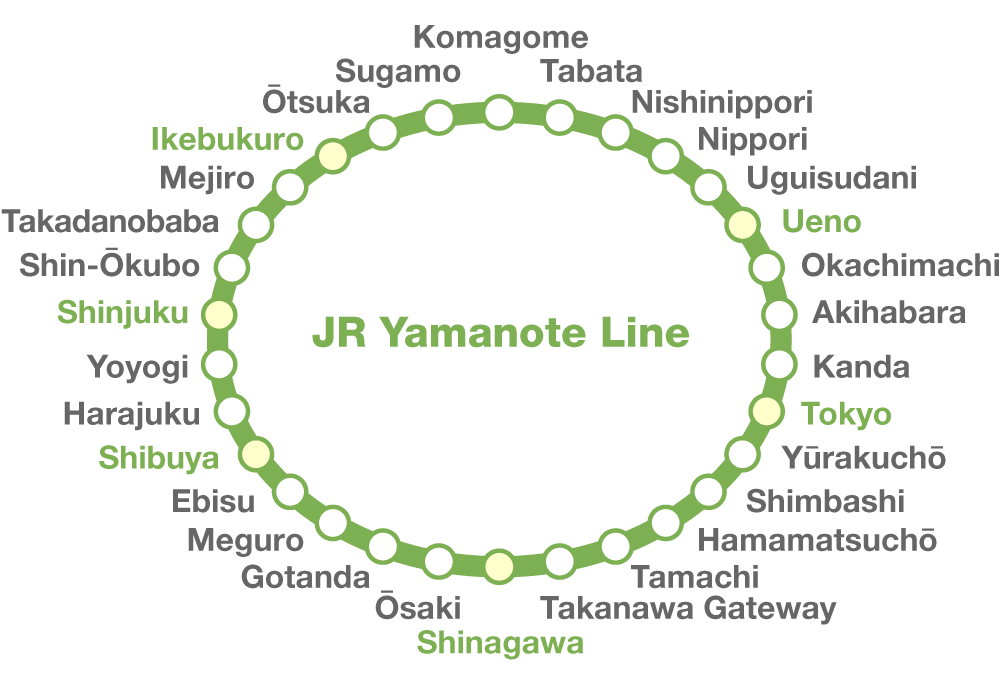
The Yamanote Line’s 30 stations. (© Pixta)
As the major above-ground transportation system in central Tokyo, the Yamanote also reflected the city’s history through the twentieth century. Indeed, some of the Yamanote stations have mirrored the changing moods of the nation, etching themselves into the working and emotional lives of its inhabitants.
In the 1950s and 1960s, amid the economic boom, hundreds of thousands of young boys and girls from the north of the country who had just graduated from junior high and high school (the so-called Golden Eggs) arrived at Ueno Station on job-hunting trains; in the 1960s, thousands of students congregated in the bowels of Shinjuku Station’s West Exit when they were not fighting furious battles with the police; and in the 1990s, groups of young foreigners boarded the Yamanote at Shibuya or Harajuku before throwing impromptu Halloween parties on the train.
There was a time, at the dawn of the railways, when people believed that if you traveled faster than, say, 50 kilometers per hour, you might actually burst and be scattered across the tracks. The Yamanote today reaches top speeds of 90 kilometers per hour, but it is far from dangerous. On the contrary, this merry-go-round on wheels offers the stressed-out crowds a well-deserved time for a short reverie, a soothing of the soul.
Or, if you are poetically inclined, you may see the Yamanote like an asteroid belt that, instead of separating star-struck lovers like the Milky Way in the famous Chinese folktale, carries millions of young and old couples to their romantic rendezvous all over Tokyo.
For the lucky passengers who manage to grab a seat, it becomes a temporary respite from work stress, aggressive shopping, wild partying, or domestic responsibility. Too bad most people spend their time with their noses buried in their smartphones or sleeping, thus missing a chance to see Tokyo from a different perspective.
It takes roughly one hour to complete the 34.5-kilometer circuit. Very few people stay on for the whole loop, but for first-comers, a trip on the Yamanote is a simple and cheap way to get introduced to this multidimensional city as one is made more aware of the variety Tokyo contains.
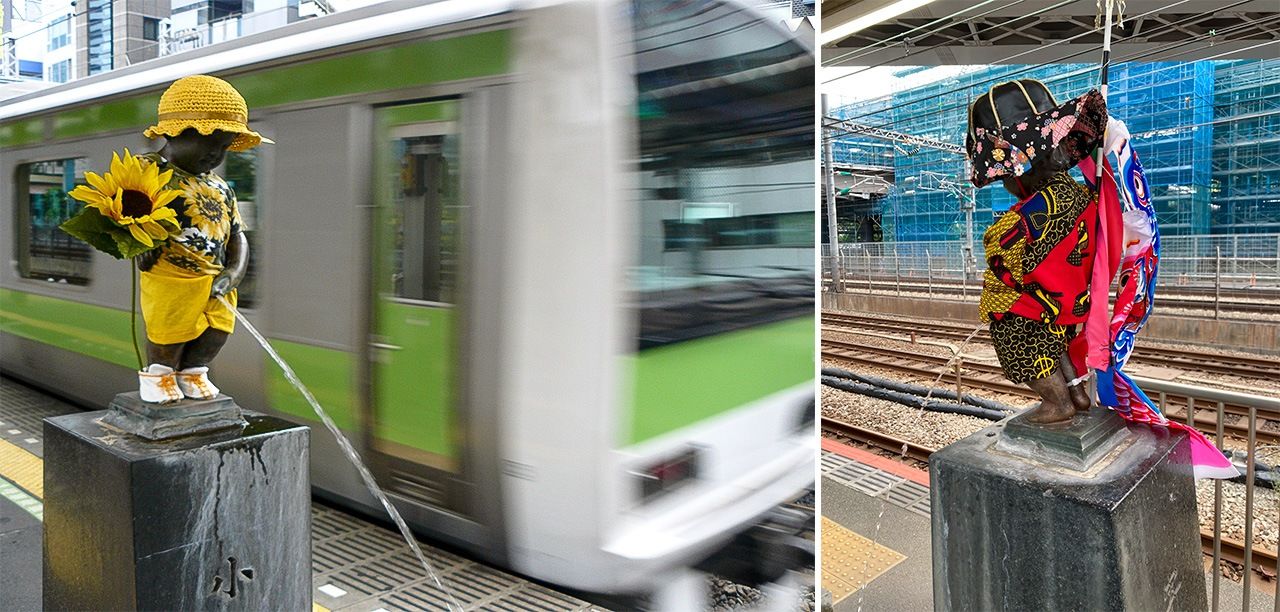
The Manneken Pis statue in Hamamatsucho Station gets a different costume every month. (© Gianni Simone)
For example, only a 20-minute ride separates Nippori and Shinjuku, but they could not be more different, as the former station is part of the old downtown area in the east—the so-called shitamachi—while the latter one is a symbol of the generally more upscale districts in the west, the above-mentioned yamanote area. Everybody can use the train to explore Tokyo. And once you feel confident enough, you may decide to get off and follow the Yamanote on foot.
The area covered by the Yamanote Line is not excessively wide, yet it is a place of extremes. For example, you may find yourself in Shinjuku, the world’s busiest station (3.5 million daily users of all the lines that converge here, as of 2019), but hop on the outer rail and after just a little more than 20 minutes you will arrive at the line’s quietest stop, Uguisudani (just 23,234 daily users as of 2023).
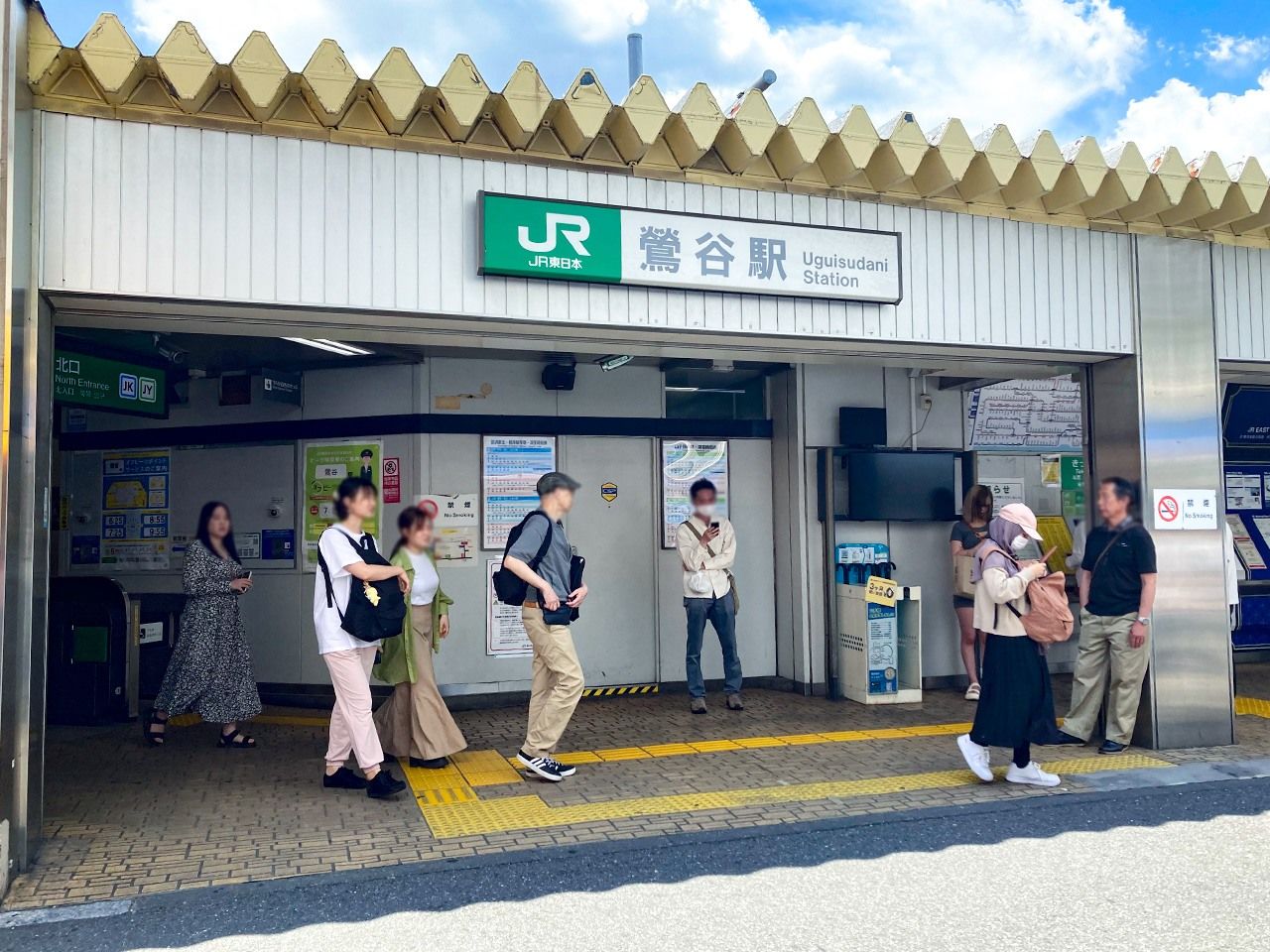
Uguisudani Station. (© Gianni Simone)
Generally speaking, northern Tokyo has some of the less-used stations. On the other hand, if you want to admire its best-looking station buildings, you should visit the city’s gorgeous, monumental central station of Tokyo or head south and get off at the stylish Takanawa Gateway, the thirtieth and most recently opened station (2020), designed by world-famous architect Kuma Kengo.
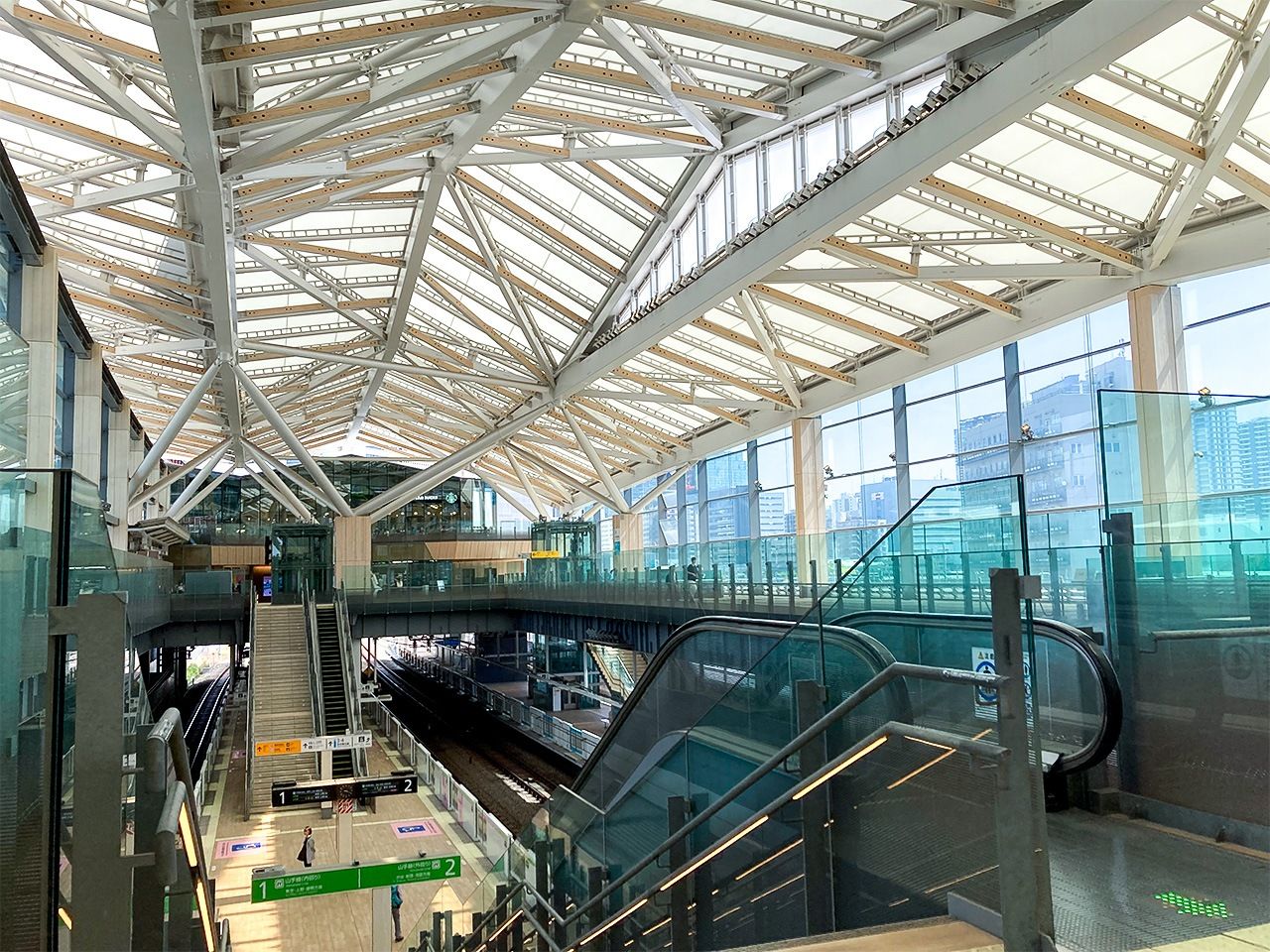
Newly built Takanawa Gateway Station, by the architect Kuma Kengo. (© Gianni Simone)
In the end, the Yamanote is a gateway through which an endless stream of people pass on a variety of missions, each one with a different story. It is those stories—the human factor—that are the secret of its appeal.
(Originally written in English. Banner photo: E235 series trains on the Yamanote line. © Pixta.)

